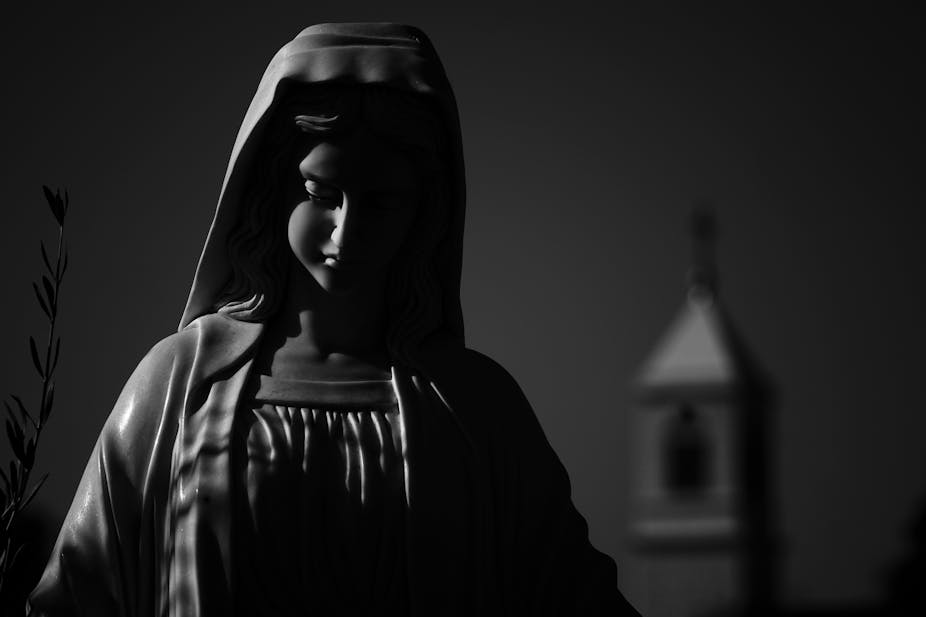Seeing Christmas through the eyes of a child is wonderful thing. The Christmas story has angels and special stars; kings who bring lavish gifts; donkeys, shepherds with their sheep; and of course a young couple who rejoice at the birth of their first baby – a boy named Jesus.
This story has for centuries been told throughout the world at Christmas. For many people it is a story of good news, faith, hope, and joy.
However, this childlike understanding of the story has little to do with history. The actual narrative of Christmas is far more revolutionary and liberating. Read in this way, the story calls into question some of the patriarchal and consumerist aspects of many contemporary African Christian beliefs.
For South Africans in particular, I suggest that a closer look at these radical elements of the story may provide some resources to respond to two of the country’s greatest contemporary concerns – gender abuse and economic corruption.
This year has seen a number of shocking reports of religious communities and religious leaders accused of sexual abuse and financial irregularities.
As various authors espoused in a 2019 book I edited on the tradition of faith, Africa remains a deeply religious continent. South Africa is no exception – 85.6% of the population identified as Christian in the 2013 General Household Survey.
According to a 2010 Pew report, 74% of South Africans indicated that religion played an important role in the formation of their morals and social values. And a study of the World Values Survey indicates that South Africans generally trust religious leaders and institutions more than either the state or the private sector.
When one considers the high levels of trust in religious leaders, it is not surprising that religious South Africans sometimes fall prey to abuses by unscrupulous religious leaders and their faith communities.
A focus on Mary, the mother of Jesus, shows how far these leaders have wandered from the Christmas message.
Mary, the mother of Jesus
For most Christians, Jesus is the central focus of the Christmas narrative. The four Gospels (Matthew, Mark, Luke and John) were written by early Christ followers to tell others who Jesus was, why they should believe in him, and what the significance of his life was for their lives.
The next most important person in the Christmas narrative is Jesus’ mother. Centuries of veneration have added layers of myth to her. The American theologian, Elizabeth Schüssler Fiorenza, writes that Mary has often been mythologised “beyond any historical resemblance” in order to legitimise male domination in Christianity, the Church and the wider world.
She says the image of Mary in historical Christianity has devalued women in three ways.
First, she is used to emphasise virginity to the detriment of female sexuality. Second, Mary’s “true womanhood” is uncritically tied to motherhood – as if the only reason that a woman exists is to bear children. Third, women and girls are told that they should adopt the virtues of “obedience, humility, passivity, and submission” that are historically emphasised in Mary’s character.
The Biblical narratives of Christmas portray quite a different woman to the one described above. Mary is a young girl; probably only 12 or 13 when she is pregnant with Jesus. Her predicament is even more complicated because she is not married. This would have been a big problem at that time when girls and women had very few rights of their own. They were completely dependent upon men for their social, financial and cultural well-being.
And the story of Jesus’ birth took place in an occupied territory. To find courage, comfort and wisdom, Mary turned not to a man, but to another woman for support – the older and more experienced Elizabeth.
According to Luke’s account, this 13-year-old unmarried girl, living in an occupied territory, said that God was about to turn the ordinary systems of power and wealth upside down. She said God was about to lift up the lowly and bring down the powerful; he would feed the hungry and send away the rich. These are not the words of some timid, silent, young girl. They are quite revolutionary.
We read that God chose a pregnant, single, young woman from an occupied territory to achieve his will in the world. This is a world away from the kind of theology on view among some of the spiritual leaders in South Africa. For example, Angus Buchan’s “Mighty Men” claim male headship over women as the will of God. And Gretha Wiid’s submissive “Worthy Women” of God suggest that the only way to restore political order and economic prosperity is for women to submit themselves unquestioningly to their husbands.
Humble beginnings
Jesus was born to this young woman, in a stable, and his first visitors were shepherds (ordinary people). This is a radical challenge to the prosperity preaching that is so prominent in South Africa today.
People who preach the prosperity gospel while driving expensive sports cars and living in luxury homes have missed the simplicity of the Christmas message as Mary tells it.
In Mary’s version the hungry will be fed, not robbed. The lowly will be raised up, not oppressed and abused.
In my view it’s time to question beliefs that have more to do with patriarchy and wealth than the Bible’s story of freedom and justice.
Christmas is an opportunity to consider Mary – a young woman who models courage and resilience; whose words and life are an invitation to new ways of being.

